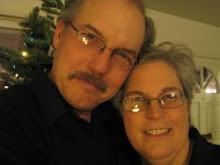
You have the greatest dog in the world. He walks on leash like a champ, always goes outside to do his "doody" and even brings your slippers by the fire every evening. So why are you so frustrated with him? It's because you can't leave the house without your lovable pup giving a performance worthy of a canine Academy Award for grief. My gosh, you can't even go to the bathroom without Fifi clawing and scratching at the door, howling in misery until she sees you again! While we feel quite honored that anyone on this Earth is so bereft without our presence, it can be a real problem if allowed to continue. Dogs suffering from separation anxiety may put up such a racket that neighbors might complain, getting Animal Control involved. An anxious dog can also be quite destructive, chewing and scratching furniture, doors, and even drywall. What's a human companion to do?
Let's start with how you leave and enter your home. Most people have a ritual of some kind they go through before going out. Shower, dress, eat breakfast, read paper, etc. Your dog quickly recognizes your routine and if he is an anxious type he'll start getting worked up bit by bit as your departure draws near. By the time you go he'll be grief-stricken. Many of us try to reassure our dog, speaking to him kindly and petting him. We empathize with his feelings and without meaning to we amplify his anxiety by showing him that, indeed, there really is something to be upset about! Leaving our sorrowful pooch behind we head off to our day, leaving him to pine and eat the walls. Upon our return good old Rover is ecstatic to see us, leaping, running and barking up a storm. Who doesn't appreciate that kind of welcome? "He's home! He's home! The Great One has returned!" We oblige this behavior with cries of joy and big hugs, again reinforcing that it is so much better to be here than gone.
All this is fine if you don't have a dog that displays classic separation anxiety behavior. If your dog is one of the many who needs help, you'll need to change your behavior as well. Before we do that, let's play a little game with Fido. One afternoon when you have about 45 minutes to an hour for training you can get a good start on a cure. Start your usual "leaving the house" routine. Get a coat on, jingle your car keys and start for the door. Pet your pooch on the head and say "Bye bye". Then step outside. If your dog can't see you on the porch, stand there silently for a few minutes. If your dog can see you through a window, go around the side of the house to wait. Whether he begins whining or not, walk back into the house after those few minutes. Ignore your dog for the first five minutes no matter what he does. Don't let him jump up on you (a later column will cover this) and don't talk to him. Sort your mail, get a glass of water. When the
 time is up, meet your dog's eyes and ask him to "sit". When he does, say "Hello" calmly, praise the sit, and go on about your day. Extend this exercise to the point where you can leave, get in your car and drive around the block before walking back in. Always use this approach, called "Cool Goodbyes and Warm Hello's" when you leave. Stick with it! There is plenty of time for affection, play and good times with your Best Friend, but he needs to know that you will always be back no matter how long or short the duration. Then and only then will he stay calmer in your absence.
time is up, meet your dog's eyes and ask him to "sit". When he does, say "Hello" calmly, praise the sit, and go on about your day. Extend this exercise to the point where you can leave, get in your car and drive around the block before walking back in. Always use this approach, called "Cool Goodbyes and Warm Hello's" when you leave. Stick with it! There is plenty of time for affection, play and good times with your Best Friend, but he needs to know that you will always be back no matter how long or short the duration. Then and only then will he stay calmer in your absence.For comments and questions, please don't hesitate to email me through this site. We're all in this together. I'll see you out there!




